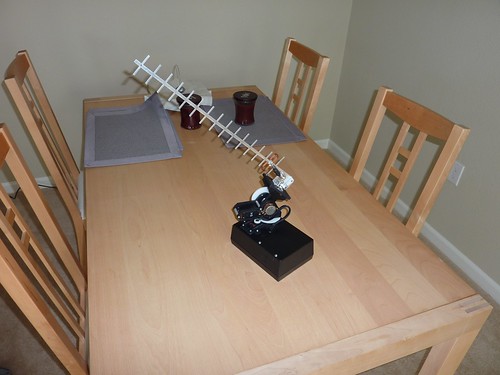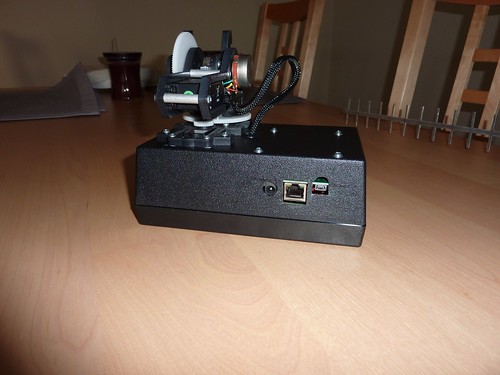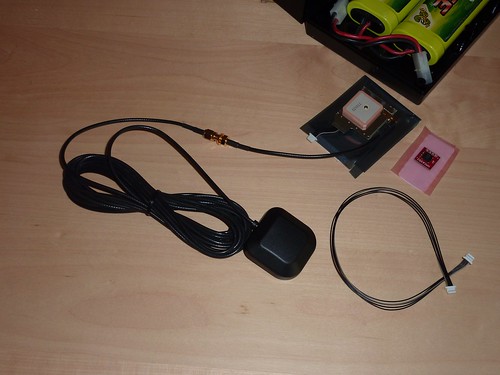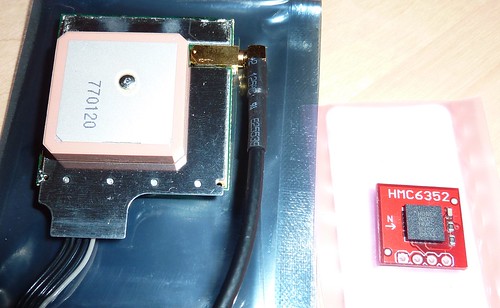Red Light Streaming Into My Office
I'm sitting at my desk in my home office, and I noticed strange red light coming in through the slats of the Venetian blind on the window. It looked fairly intense, as if coming from a good sunset. But it was not even 4 pm, and the sun sets on the other side of the building, so there's now way that's what it was.
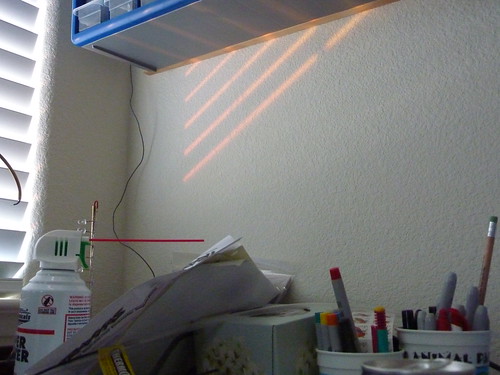
So, I looked along the rays of light to see the source. Turns out, the afternoon sun was reflecting off a stop sign in the street below. I'm still not sure how the reflection occurred, since the sign is roughly perpendicular to the ground, and both the Sun and I are well above the sign, and both on the same side of it (left-to-right and front-to-back). Perhaps it's the nature of the reflective paint used.
Shooting the sign challenged my otherwise fairly capable digicam, a Panasonic Lumix DMC-ZS3. Interesting vertical lines appear prominent in the sign, as does a double image. The image was taken through a somewhat dirty window and screen, but the effect is barely noticeable (if at all) on other elements in the image.
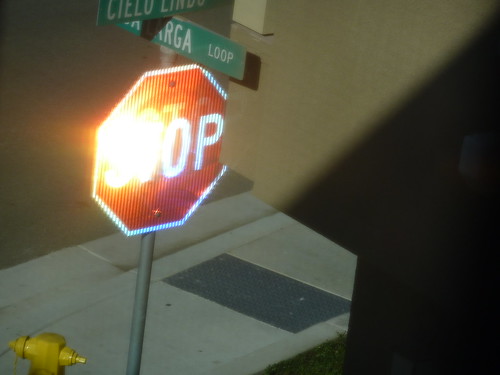
Anyway, I thought it was pretty cool.

